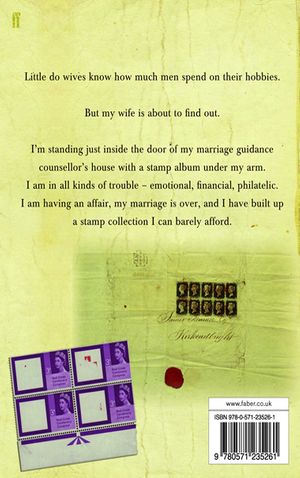The Error World
Extract
Chapter 7
Heinz
In biology lessons I was taught that the big human limb joints worked like elaborate machines. The shoulder, elbow, knee and ankle, an intricate system of pulleys and weights and cogs and lubrications: when they worked you wouldn’t think twice, but when they didn’t you knew about it. One hot London after- noon in the early 1980s the left knee of my uncle Heinz stopped working, and as we walked across Regent’s Park every animal in London Zoo surely realised something was wrong. It was the noise: unhealthy, unnatural, unforgettable. It was as if a comedy oak door (creeeeaaaakkkk) had fallen on pine cones in the frost (crrruunnnchhh). The mechanism had gone. Heinz’s lower leg was wooden, and some part of it – perhaps the attachment to what was left of his original leg – needed linseed or codliver oil and bed-rest. Heinz’s leg had been blown off at the end of the 1948 Israeli War of Independence, and if only I’d known it needed so much maintenance I’d never have set out on that walk, or at least made sure we didn’t get lost. I learnt a lesson that day: modern wars are about oil, but for Heinz the peace was about oil too.
Heinz Bauernfreund (trans: ‘Friend of the Farmer’) was married to my mother’s sister Eva. My mother came from Israel to London to marry my dad, and Eva stayed in Israel to marry a soldier. They were a lovely couple, but not obviously well matched. Heinz was a dashing model of uprightness, and had a job for life in life insurance; Eva was more rotund and warm: gemütlich. They had handsome children and a very busy kitchen. And then there were stamps, which occupied most of Heinz’s leisure time and none of Eva’s, a gender divide fairly mirrored throughout the world. Some couples get used to it – embrace it even – and some never do, and for my aunt I think her husband’s philatelic devotions presented another reason to cast a wandering eye over other gentlemen.
They lived in Zahala, a spacious manicured village north- east of Tel Aviv, and the first thing you noticed when you entered their home was how ordered everything was. More particularly, you noticed how irritable Heinz would get if a cushion or drinks coaster was moved beyond a Heinz-defined comfort zone, usually measured with a slide-rule. My father was a little bit like this, and I inherited the gene, but we had it mild next to Heinz. There was an extensive collection of miniature liquor bottles Heinz had picked up on his travels over the years, one hundred or so, some of them very old and definitely undrinkable. He had arranged them on a thin shelf that ran across the top of the door of the main reception room, one long limbless parade ground. They were so high that guests would never be tempted to rearrange them. But occasionally the movement of the door below would jog a bottle a fraction of an inch out of line, and Heinz couldn’t sit down until he had climbed up and set the miniature world to rights. What would Freud have diagnosed in those days before obsessive–compulsive disorder? A need for reassurance; the pleasure and security of ownership; a desire to have everything just as it was and should be forever.
Read the full extract .pdf format (62kb)


